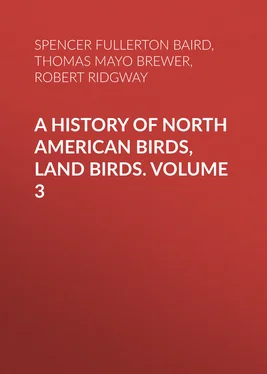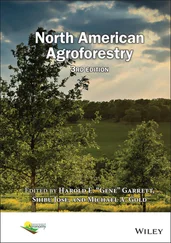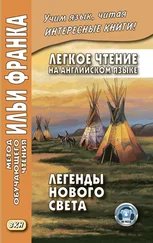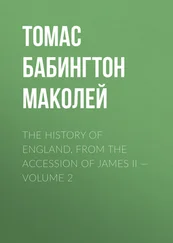Spencer Fullerton Baird - A History of North American Birds, Land Birds. Volume 3
Здесь есть возможность читать онлайн «Spencer Fullerton Baird - A History of North American Birds, Land Birds. Volume 3» — ознакомительный отрывок электронной книги совершенно бесплатно, а после прочтения отрывка купить полную версию. В некоторых случаях можно слушать аудио, скачать через торрент в формате fb2 и присутствует краткое содержание. Жанр: foreign_antique, Биология, foreign_edu, на английском языке. Описание произведения, (предисловие) а так же отзывы посетителей доступны на портале библиотеки ЛибКат.
- Название:A History of North American Birds, Land Birds. Volume 3
- Автор:
- Жанр:
- Год:неизвестен
- ISBN:нет данных
- Рейтинг книги:5 / 5. Голосов: 1
-
Избранное:Добавить в избранное
- Отзывы:
-
Ваша оценка:
- 100
- 1
- 2
- 3
- 4
- 5
A History of North American Birds, Land Birds. Volume 3: краткое содержание, описание и аннотация
Предлагаем к чтению аннотацию, описание, краткое содержание или предисловие (зависит от того, что написал сам автор книги «A History of North American Birds, Land Birds. Volume 3»). Если вы не нашли необходимую информацию о книге — напишите в комментариях, мы постараемся отыскать её.
A History of North American Birds, Land Birds. Volume 3 — читать онлайн ознакомительный отрывок
Ниже представлен текст книги, разбитый по страницам. Система сохранения места последней прочитанной страницы, позволяет с удобством читать онлайн бесплатно книгу «A History of North American Birds, Land Birds. Volume 3», без необходимости каждый раз заново искать на чём Вы остановились. Поставьте закладку, и сможете в любой момент перейти на страницу, на которой закончили чтение.
Интервал:
Закладка:
In their distribution, the Owls, as a family, are cosmopolitan, and most of the genera are found on both hemispheres. All the northern genera ( Nyctea , Surnia , Nyctale , and Scotiaptex ), and the majority of their species, are circumpolar. The genus Glaucidium is most largely developed within the tropics, and has numerous species in both hemispheres. Otus brachyotus and Strix flammea are the only two species which are found all over the world,—the former, however, being apparently absent in Australia. Gymnoglaux , Speotyto , Micrathene , and Lophostrix are about the only well-characterized genera peculiar to America. Athene , Ketupa , and Phodilus are peculiar to the Old World. The approximate number of known species (see Gray’s Hand List of Birds, I, 1869) is about two hundred, of which two, as stated, are cosmopolitan; six others ( Surnia ulula , Nyctea scandiaca , Glaucidium passerinum , Syrnium cinereum , Otus vulgaris , and Nyctale tengmalmi ) are found in both halves of the Northern Hemisphere; of the remainder there are about an equal number peculiar to America and the Old World.
As regards the distribution of the Owls in the Nearctic Realm, a prominent feature is the number of the species (eighteen, not including races) belonging to it, of which six ( Micrathene whitneyi , Nyctale acadica , Syrnium nebulosum , S. occidentale , Scops asio , and S. flammeola ) are found nowhere else. Speotyto cunicularia and Bubo virginianus are peculiarly American species found both north and south of the equator, but in the two regions represented by different geographical races. Glaucidium ferrugineum and G. infuscatum (var. gnoma ) are tropical species which overreach the bounds of the Neotropical Realm,—the former extending into the United States, the latter reaching to, and probably also within, our borders. Of the eighteen North American species, about nine, or one half ( Strix flammea var. pratincola , Otus brachyotus , O. vulgaris var. wilsonianus , Syrnium cinereum , Nyctale acadica , Bubo virginianus , and Scops asio , with certainty, and Nyctea scandiaca var. arctica , and Surnia ulula var. hudsonia , in all probability), are found entirely across the continent. Nyctale tengmalmi , var. richardsoni , and Syrnium nebulosum , appear to be peculiar to the eastern portion,—the former to the northern regions, the latter to the southern. Athene cunicularia var. hypugaea , Micrathene whitneyi , Glaucidium passerinum var. californicum , Syrnium occidentale , and Scops flammeola , are exclusively western, all belonging to the southern portion of the Middle Province and Rocky Mountain region, and the adjacent parts of Mexico, excepting the more generally distributed Speotyto cunicularia , var. hypogæa , before mentioned. Anomalies in regard to the distribution of some of the species common to both continents, are the restriction of the American representative of Glaucidium passerinum to the western regions, 9 9 This case of the restriction of the American representative of a European or Western Palæarctic species to the western half of the continent has parallel instances among other birds. The American form of Falcolanarius (var. polyagrus ), of Corvus corax (var. carnivorus ), Pica caudata (var. hudsonica and var. nuttalli ) and of Ægialitis cantianus (var. nivosus ), are either entirely restricted to the western portion, or else are much more abundant there than in the east. The European genera Cinclus , Coccothraustes , Nucifraga , and Columba have representatives only in the western portion of North America. Instances of a similar relation between the plants of the Western Province of North America and those of Europe, and more striking likeness between the flora of the Eastern Region and that of Eastern Asia, are beautifully explained in Professor Gray’s interesting and instructive paper entitled “Sequoia, and its History,” an address delivered at the meeting of the American Association for the Advancement of Science, at Dubuque, Iowa, August, 1872. The poverty in the species of tortoises, and richness in lizards, and the peculiarities of the ichthyological fauna, as well as absence of forms of Western North America and Europe, compared with Eastern North America and Eastern Asia, afford other examples of parallelism in other classes of the Animal Kingdom.
and of Strix flammea to the very southern and maritime portions of the United States, the European representatives of both species being generally distributed throughout that continent. On the other hand, the northwest-coast race of our Scops asio ( S. kennicotti ) seems to be nearly identical with the Japanese S. semitorques (Schlegel), which is undoubtedly referrible to the same species.
As regards their plumage, the Owls differ most remarkably from the Hawks in the fact that the sexes are invariably colored alike, while from the nest to perfect maturity there are no well-marked progressive stages distinguishing the different ages of a species. The nestling, or downy, plumage, however, of many species, has the intricate pencilling of the adult dress replaced by a simple transverse barring upon the imperfect downy covering. The downy young of Nyctea scandiaca is plain sooty-brown, and that of Strix flammea immaculate white.
In many species the adult dress is characterized by a mottling of various shades of grayish mixed with ochraceous or fulvous, this ornamented by a variable, often very intricate, pencilling of dusky, and more or less mixed with white. As a consequence of the mixed or mottled character of the markings, the plumage of the Owls is, as a rule, difficult to describe.
In the variations of plumage, size, etc., with differences of habitat, there is a wide range, the usually recognized laws 10 10 See Baird, Am. Journ. Arts and Sciences, Vol. XLI, Jan. and March, 1866; Allen, Bull. Mus. Comp. Zoöl. Cambridge, Vol. II, No. 3; and Ridgway, Am. Journ. Arts and Sciences, Vols. IV and V, Dec., 1872, and Jan., 1873.
applying to most of those species which are generally distributed and resident where breeding. Of the eight species common to the Palæarctic and Nearctic Realms, all but one ( Otus brachyotus ) are modified so as to form representative geographical races on the two continents. In each of these cases the American bird is much darker than the European, the brown areas and markings being not only more extended, but deeper in tint. The difference in this respect is so tangible that an experienced ornithologist can instantly decide to which continent any specimen belongs. Of the two cosmopolitan species one, Otus brachyotus , is identical throughout; the other is modified into geographical races in nearly every well-marked province of its habitat. Thus in the Palæarctic Realm it is typical Strix flammea ; in the Nearctic Realm it is var. pratincola ; while Tropical America has at least three well-marked geographical races, the species being represented in Middle America by the var. guatemalæ , in South America by var. perlata , and in the West Indies by the var. furcata . The Old World has also numerous representative races, of which we have, however, seen only two, namely, var. javanica (Gm.), of Java, India, and Eastern Africa, and var. delicatula (Gould) of Australia, both of which we unhesitatingly refer to S. flammea . 11 11 For diagnoses of these geographical races of Strix flammea , see pp. 1339 and 1340.
Интервал:
Закладка:
Похожие книги на «A History of North American Birds, Land Birds. Volume 3»
Представляем Вашему вниманию похожие книги на «A History of North American Birds, Land Birds. Volume 3» списком для выбора. Мы отобрали схожую по названию и смыслу литературу в надежде предоставить читателям больше вариантов отыскать новые, интересные, ещё непрочитанные произведения.
Обсуждение, отзывы о книге «A History of North American Birds, Land Birds. Volume 3» и просто собственные мнения читателей. Оставьте ваши комментарии, напишите, что Вы думаете о произведении, его смысле или главных героях. Укажите что конкретно понравилось, а что нет, и почему Вы так считаете.












